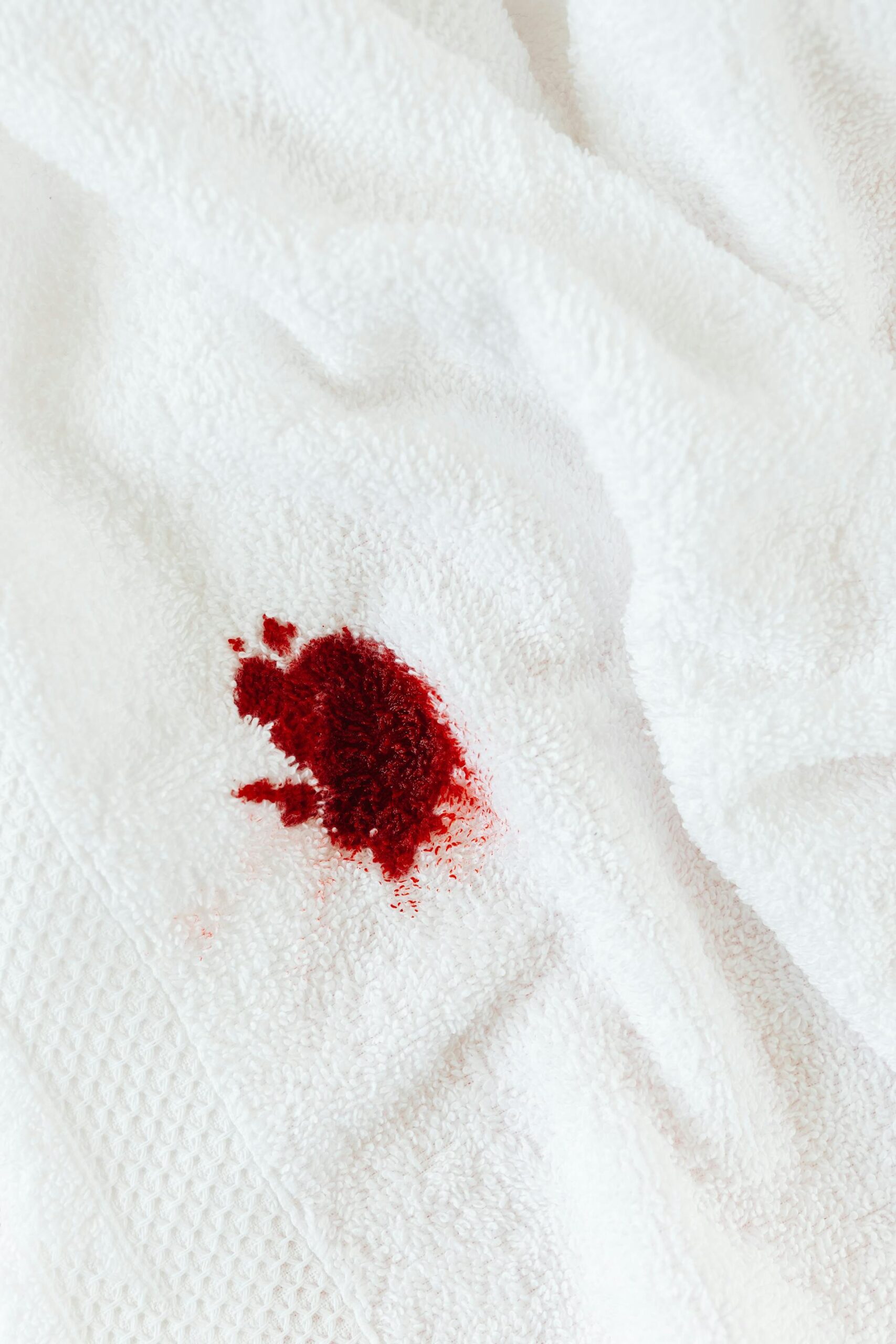Introduction
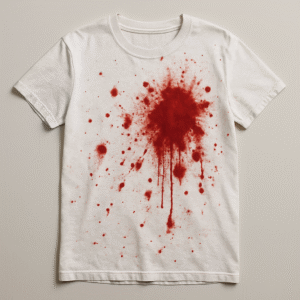
Blood stains happen when you least expect them. Maybe your nosebleed catches you off guard, or you have a paper cut at work, or your child falls while playing outside. Even a tiny drop of blood seems to spread across fabric, turning from a bright red blot into a stubborn brown mark. The worst part comes when you try to wash your clothes, only to find the stain set in deeper.
But you do not need to live with blood stains. You do not need to throw away your favorite shirt, jeans, or bedsheets. With the right approach, you can remove both fresh and dried blood from almost any fabric. This guide will show you clear, step-by-step instructions for removing blood stains—plus tips to prevent them from happening again.
Why Is Blood So Hard to Remove from Fabric?
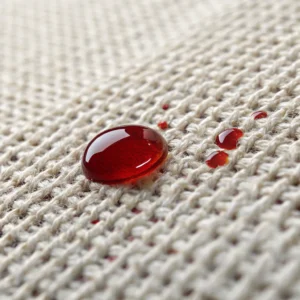
Blood contains proteins and iron. When blood dries, the proteins bind to fabric fibers. Hot water or a hot dryer “cooks” the proteins, making them harder to remove. Every fabric reacts differently to stains. Cotton is forgiving, but synthetics like polyester or nylon may be tricky. Delicate fibers, such as silk or wool, need extra caution.
Quick lesson: Always treat a blood stain as soon as possible. The longer it sits, the harder it becomes to clean.
Step 1: Respond Quickly—What to Do Immediately
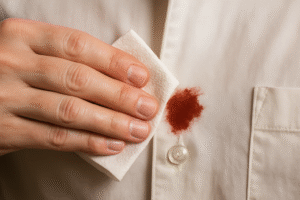
Act fast. As soon as you notice blood on your clothing, scrape off any excess liquid with a paper towel or cloth. Don’t rub—blot gently so you don’t spread the stain or push blood deeper into the fibers.
Prevention Tip: Carry tissues, hand wipes, or even a mini stain-removal pen in your backpack, purse, or car.
Method 1: Cold Water Rinse

What you’ll need:
- Cold tap water
- Sink or large bowl
How to do it:
- Hold the stained area under cold, running water.
- Move the fabric with your fingers to help lift the stain.
- Let the water flush out as much blood as possible.
- If you cannot rinse right away, blot with a cold, wet cloth.
Why it works: Cold water keeps blood proteins from bonding to the fibers. Warm or hot water will set the stain.
Prevention Tip: If you expect to get small cuts, keep a travel pack of baby wipes with you.
Method 2: Salt and Water Paste
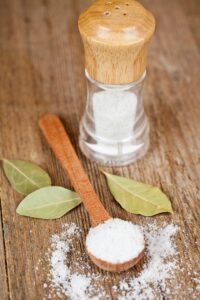
What you’ll need:
- Table salt
- Cold water
How to do it:
- Pour salt into a small bowl.
- Add cold water slowly to form a thick paste.
- Spread the paste over the bloodstain.
- Gently rub it in using your fingers or a soft toothbrush.
- Let it sit for 20–30 minutes.
- Rinse with cold water.
- Repeat if needed.
Why it works: Salt draws blood from the fibers and helps break down proteins. The mild abrasion lifts the stain.
Prevention Tip: Toss a small packet of salt in your gym bag or glove box. For kids, keep extra salt in your playroom first-aid kit.
Method 3: Hydrogen Peroxide for Whites and Light Fabrics
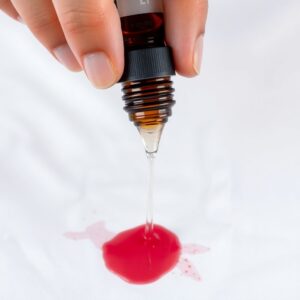
What you’ll need:
- Hydrogen peroxide (3%)
- Clean towel or cloth
How to do it:
- Test on an inside seam to check for color loss.
- Pour or dab a small amount of hydrogen peroxide onto the stain.
- It will fizz or bubble on contact.
- Wait 5–10 minutes.
- Blot with a clean cloth.
- Rinse thoroughly with cold water.
Why it works: Peroxide breaks down blood’s proteins and lifts pigments. But it can bleach or lighten colors, so test first.
Prevention Tip: Keep a labeled bottle of hydrogen peroxide where you store laundry supplies.
Method 4: Enzyme Cleaners
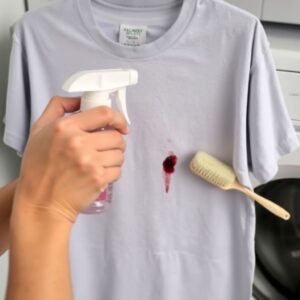
What you’ll need:
- Enzyme laundry pretreatment or stain remover
- Soft brush (optional)
How to do it:
- Shake the enzyme product and read label directions.
- Spray or dab the cleaner on the stained area.
- Allow to soak for 15–30 minutes (or longer for old stains).
- Use a soft brush to work the solution deeper if needed.
- Rinse with cold water or wash per fabric instructions.
Why it works: Enzyme cleaners break down organic stains—including blood—so they can be washed away. They work well for both fresh and dried stains.
Prevention Tip: For families with kids, athletes, or people who work with their hands, always have an enzyme product on your laundry shelf.
Method 5: Baking Soda and Water
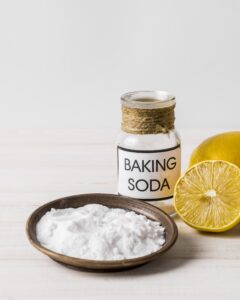
What you’ll need:
- Baking soda
- Cold water
How to do it:
- Mix enough baking soda with cold water to make a paste.
- Cover the stain with the paste.
- Let it sit for 30–40 minutes.
- Scrub gently with fingers or a soft brush.
- Rinse with cold water.
- Wash as usual if possible.
Why it works: Baking soda absorbs, loosens, and lifts proteins and iron in the blood.
Case Example:
You come home to find your child tracked blood on the hallway runner. Mix a baking soda paste, dab it on the marks, let it sit, then blot away. The same method works great for couch cushions or car seats.
What If the Blood Stain Is Already Dry?

Dried blood is more difficult to remove, but not impossible. Follow these steps:
- Scrape or gently brush off any crusted blood.
- Soak the fabric in a bowl of cold water for at least one hour.
- Apply one of the above treatments: salt paste, baking soda paste, hydrogen peroxide (on light fabrics), or enzyme cleaner.
- Let the solution sit for 30–60 minutes or overnight for extra-stubborn stains.
- Rinse, check your progress, and repeat if needed.
Tip: For thick fabrics like denim or towels, soak for longer periods or use an enzyme cleaner.
Special Instructions for Delicate Fabrics

Delicate materials like silk or wool need extra care.
- Blot the blood gently. Do not scrub.
- Mix a small amount of mild soap or shampoo with cold water.
- Dip a soft cloth in the solution and dab the stain.
- Rinse carefully.
- If using vinegar, mix with water in equal parts and dab, then rinse.
- Air dry, and avoid wringing or twisting.
Prevention Tip: Look at the care label before using any chemical or scrub method.
What About Blood Stains on Bed Sheets, Mattresses, or Upholstery?
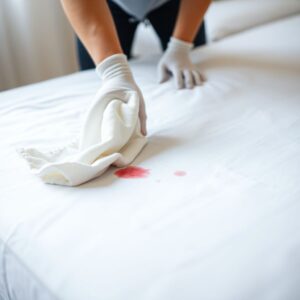
Blood stains on bedding or furniture cause stress, too. Follow the same basic rules:
- Blot excess blood, do not rub.
- Use cold water and either salt, baking soda paste, or an enzyme cleaner.
- Dampen (don’t soak) a cloth and dab at the stain.
- Keep the stain area as dry as possible for couches or mattresses.
- For mattresses, sprinkle salt or baking soda directly, let it draw out moisture, then vacuum or wipe clean.
What NOT to Do

- Don’t start with hot water—this will cook the stain.
- Don’t use the dryer until the stain is totally gone. Heat will make it permanent.
- Don’t rub hard—gentle dabbing is more effective.
- Don’t mix cleaning chemicals (like ammonia and bleach).
Real-Life Example: Treating Blood on a Favorite Pair of Jeans
Imagine you just scraped your knee walking the dog. There’s a fresh blood stain on your jeans.
- Quickly rinse with cold water.
- Make a salt paste and rub into the stain with your fingers.
- Let it sit for 30 minutes.
- Rinse and check. If the stain lingers, dab on hydrogen peroxide (if jeans are light in color) or use an enzyme cleaner.
- Rinse, then let air dry.
Result: Stain removed, and you save your jeans.
Preventing Future Blood Stains
You can prevent many stains with a few habits:
- Act quickly as soon as you see a stain.
- Carry handkerchiefs, tissues, or wipes—especially for frequent nosebleeds or children who fall often.
- Wear darker colors during high-risk activities.
- Cover healing wounds with secure, quality bandages.
- Use pillow/mattress protectors.
- Teach kids how to handle small injuries and stains.
- Check clothing for stains before tossing items into the wash, so heat doesn’t set unnoticed stains.
FAQs

Q: Can I use regular soap or dishwashing liquid on blood stains?
A: Mild soap can help gently lift fresh stains, but enzyme options are usually more effective for old or dried blood.
Q: What should I do if blood stains make it into the dryer by mistake?
A: You can still treat the stain, but removal becomes harder. Try soaking the area with cold water and using enzyme cleaner repeatedly.
Q: Will vinegar work for blood stains?
A: Vinegar can break down the blood proteins. Mix with water and dab the stain, but always rinse thoroughly, and avoid vinegar on silk or other delicates.
Q: Should I try bleach?
A: Only use bleach as a last resort, and only on sturdy, white fabrics. Bleach can weaken fibers and leave yellow marks if overused.
Q: Can I remove blood stains from dry-clean only fabrics?
A: Dab gently with cold water and blot. Do not rub. For expensive items, take them to a professional.
Q: How do I handle blood stains on shoes?
A: For fabric shoes, use cold water and baking soda. For leather, use a damp cloth and mild soap. Avoid soaking leather; dry promptly.
Q: Do saliva or milk work for blood stains?
A: Some people use saliva, as enzymes break down proteins, but results may vary. Milk’s enzymes can help for fresh stains, but commercial products are more reliable.
Q: Is there a universal trick for all blood stains?
A: No. Each fabric and stain is unique. Always use cold water and work gently. Have basic supplies on hand for emergencies.
Q: What if my child stains sports uniforms with blood?
A: Treat immediately when you get home. Use the cold-water method, followed by baking soda or enzyme cleaner. Wash as usual.
Conclusion
Blood stains do not have to ruin your day—or your clothes. Act fast, use cold water, and select one of these proven methods: cold water rinse, salt and water paste, hydrogen peroxide, enzyme cleaner, or baking soda paste. Avoid hot water, don’t rub, and don’t dry in high heat until stains are gone. For all ages and situations, consistent habits and easy prevention save your favorite outfits.
Stay prepared, check your clothes, and take prompt action. Clean clothes and peace of mind are possible, any day of the week.
If this guide helped you handle a stubborn stain, keep it handy for the future and share it with someone who might need a little laundry wisdom!

